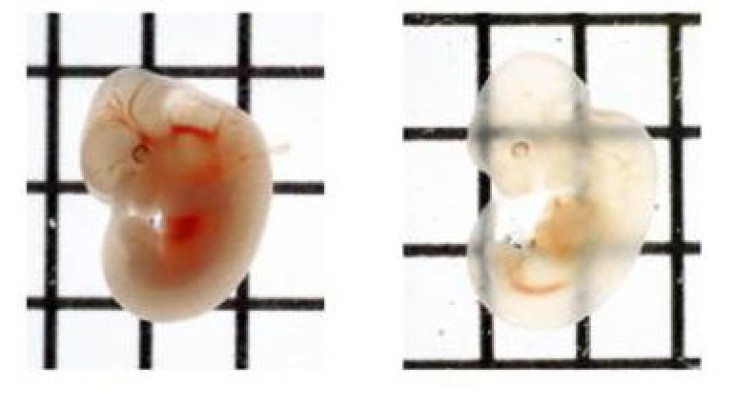Scientists Make Brains Transparent, Version 2.0: Faster and Safer For Research [VIDEO]

The post-2000 era of technology is riddled with examples of innovations spawning more innovation. Everyone had a MySpace page, until everyone had Facebook page. Ipod begat Iphone who begat Ipads.
And a few shorts months after Stanford researchers discovered a way to make brain tissue 'invisible', scientists in Japan have figured out a way to do it faster.
Rewind your mental clock back to April, and you probably remember hearing about CLARITY -the technique can transform a preserved mouse brain from opaque to transparent.
While this invention may not alter your day-to-day life, it was extremely exciting for scientists. It provided an exciting new way to examine the architecture of the mind that could help them explore the foundations for countless mental disorders, like Alzheimer's disease and depression.
Rather than having to slice a preserved brain into thin sections and studying each one under a microscope, they could now look at cells in an intact brain. Fluorescent labels for different brains cells and structures could be added to CLARITY brains, which provided unbelievable...well...clarity. And all of it was in 3-D!
Demonstration of CLARITY (Credit: Nature)
A new study published today in Nature Neuroscience claims to have created a quicker, easier, and safer alternative. Turns out that CLARITY relies on a gel substance composed of two highly dangerous chemicals - formaldehyde and acrylamide. Both are carcinogens, and the latter is a potent neurotoxin, which means the CLARITY gel requires careful handling by scientists.
The innovative technique, from the Japanese research institute RIKEN, uses a special mixture of fructose - a type of sugar - and unharmful chemicals to eliminate opacity. This new cocktail, which is mixed in water, was named "SeeDB" or "See Deep Brain
SeeDB made a mousse brain transparent in three days, which was significant improvement over the nine days needed for CLARITY.
Sliver of A SeeDB Transparent Mouse Brain (RIKEN). Neurons are gentically labelled with a fluorescent marker.
RIKEN's SeeDB is less expensive and doesn't require any special equipment, whereas the scientists who developed CLARITY had to build a personalized rig to get the job done. Other labs that want to use CLARITY would have to do the same.
"I burned and melted hundreds of brains trying to make it work," CLARITY creator Dr. Kwanghun Chung told National Geographic in April. During one step, CLARITY uses an electrical current to remove opaque components of the brain. In contrast, brains only need to be soaked in the SeeDB liquid mixutres for a couple of days to make them see-through.
CLARITY also removes all lipids from the brains. Lipids are organic compounds and an important component of myelin - a substance found in several brain circuits. While these circuits can't be studied in CLARITY brains, the new SeeDB allows for their exploration in transparent brains, which the authors show in their study.
Neurons and Circuits Labelled In A SeeDB See-Through Brain (Credit: RIKEN)
SeeDB Transparent Mouse Brain - Fly Through (RIKEN)
"Because SeeDB is inexpensive, quick, easy and safe to use, and requires no special equipment, it will prove useful for a broad range of studies, including the study of neuronal circuits in human samples," explain the authors, who were led by Dr. Takeshi Imai, a developmental neuroscientist at RIKEN.
Source: Ke MT, Fujimoto S, Imai T. SeeDB: a simple and morphology-preserving optical clearing agent for neuronal circuit reconstruction. Nature Neuroscience. 2013.



























